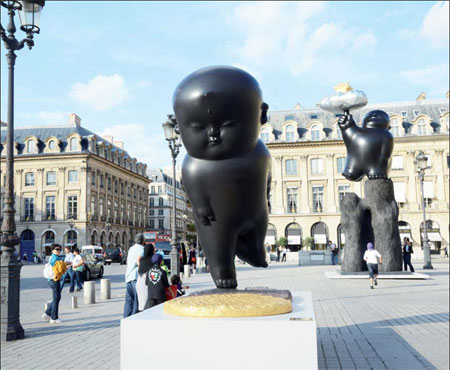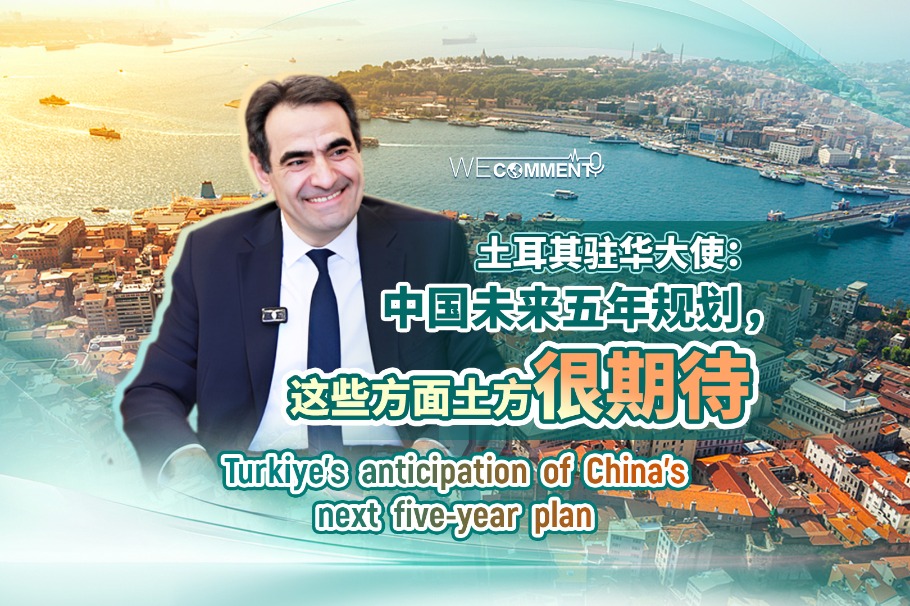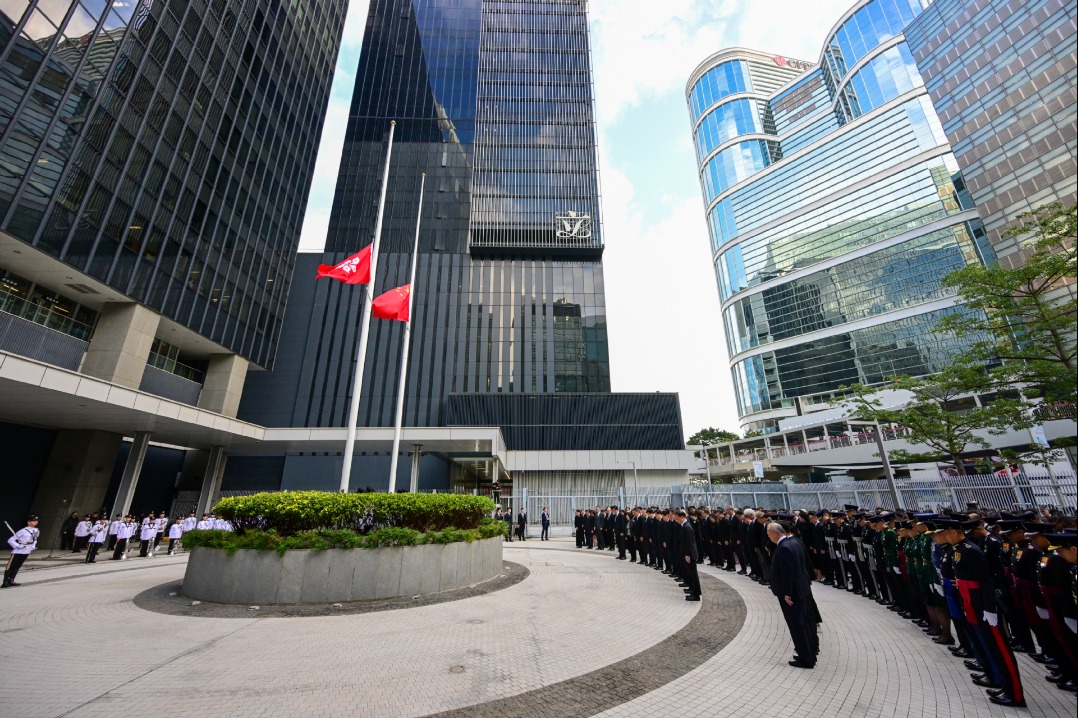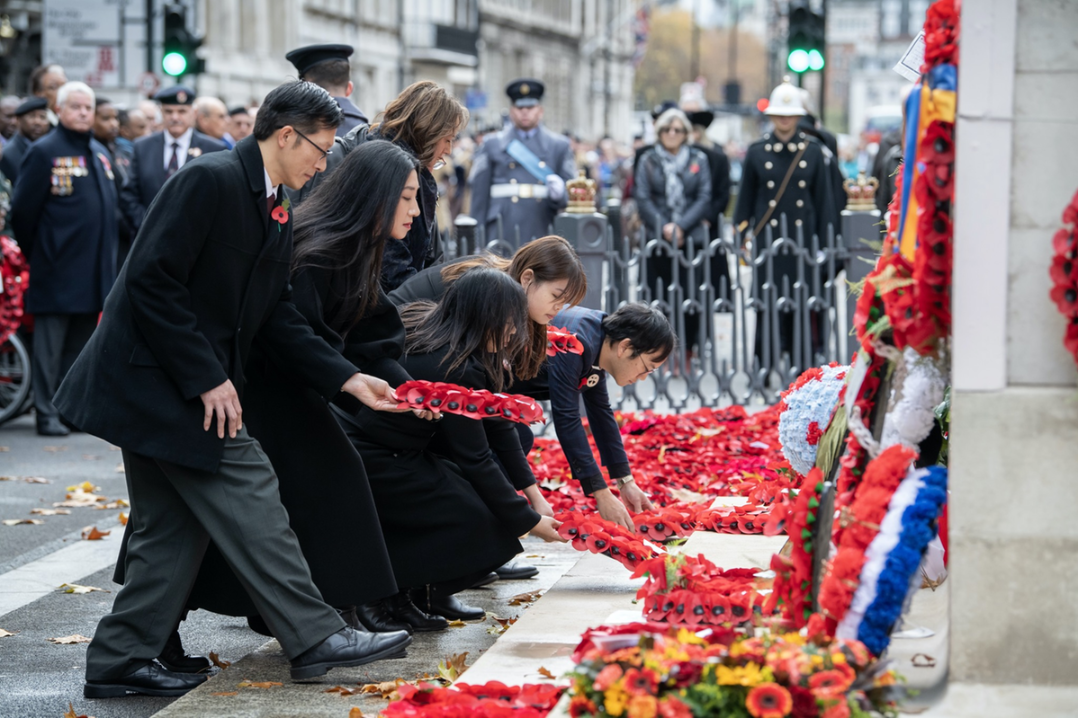Giants with a light touch

Paris exhibition proves li chen is emerging on the global scene as a leading sculptor
The 12 huge bronze sculptures on show at the Place Vendome in central Paris have received enthusiastic public approval. Viewers, it seems, can sense the "monumental levity" of these impressive works, which the Chinese artist Li Chen produced from 1998 to 2010. They are materially heavy, yet visually light. Levity, quiescence and comfort are words that are automatically associated with Li's works.
The Paris exhibition has raised awareness of Li's art. This outdoor event, his second solo show in Europe after the 2007 Venice Biennale, will tour other European cities next year. Bordeaux's Place de la Bourse will be the next venue, while several German and Italian cities are also planning to stage the show.
People interested in contemporary Chinese art will also enjoy Li's unique work on television, during a series on China to be aired on the Discovery channel in December.
Li's art is the singular result of the power of solitude. It blooms in solitude, a state in which we see more clearly. The sculptor lives in Shanghai, but often retreats to the stillness of the Chinese mountains.
"And I also have my studio in Shanghai, but I rarely go outside," he says. "I enjoy time on my own, taking a walk in the mountains or drinking tea ... I have chosen to spend my life in solitude. My quest is to find a spiritual space through my work, a space of one's own."
His Paris exhibition conveys the impression that Li brings a transcendental perspective to the mundane.
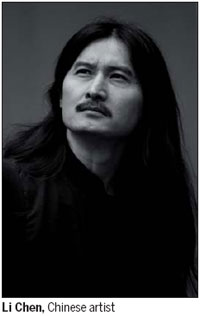
"Indeed it is. I have a simple life and not many friends," he says. "Therefore, a certain aspect of my life is alienated from society. But it is impossible to separate myself completely from reality. Sometimes I see phenomena that pain me ... My art is to do with intimate, personal thoughts and feelings."
Profound meanings creep into his works, as if they have a mind of their own. They are the expression of images that originate in the soul and speak of the state of the heart, and they combine naivety, levity and realism.
"As The Butterfly Lovers in the East and Romeo and Juliet in the West are fictional stories meant to mirror human emotions and desires, not to tell a true story, the purpose of my work is to connect with viewers on a spiritual level through shared emotions," Li says. "My art is a complex state of being. When I finish a work, my mood is particularly joyful.
"One day I was camped in the mountains; that night I had not slept well. When I walked out of my tent, I saw a huge mountain ridge covered by a layer of snow-white cloud that seemed to linger there. Suddenly, I imagined I had to climb onto the cloud, then lie down. It was so wonderful. I drew inspiration from that sensation of relaxation to create my Float to Sukhavati, which evokes transcendental emptiness, and that is a very calm feeling."
When you look at Li's sculptures from a distance, they appear light, almost insubstantial, although the material used to make them couldn't be more solid: bronze, traditionally the king of sculptural materials. But how is Li able to infuse his giant works with this sense of levity?
"Black is a heavy color, but when we close our eyes during meditation, it becomes light and empty," he says. "Therefore, I modify them structurally to create a kind of visual effect of monumental levity by incorporating black material with abstract energy - qi."
This sounds very much like a secret formula. Visual effects and rhythms alter the sculptures appearances and lend them a playful quality.
"My sculptures are in bronze, but I have to insert an extra internal structure to make them stable, which makes them even heavier. However, as you may have noticed, the larger my works, the lighter they appear, since mental states and the spirit are weightless. I try to combine these two contradictory elements within my sculptures, and monumental levity is the effect I'm trying to achieve."
Li insists that if only the heaviness of the physical material is perceived, his sculptures are meaningless.
He enjoys every second of the creative process. "As if I were flying," he says. "Yet not in the sense of drifting away, but in terms of pure transcendental enjoyment."
When asked which Western sculptors appeal to him, he replies: "When I was a student I was really impressed by Michelangelo, Rodin, Alberto Giacometti and Henry Moore."
Li is familiar with numerous art forms, and is especially fond of primitive art. "But most of my techniques were inherited from the Eastern tradition," he says. "And even though I spent seven years struggling between tradition and individual expression, it is Eastern culture that stands beside the cradle of my art."
Li believes art teaches us reverence for life and understanding of its value and meaning.
"I studied Taoism and Buddhism to form my perspective on life and convey my ideas through sculpture," he says. "The greatness of art lies in sharing it with people and in its immense possibilities.
"I'm not sure whether my work can produce any real meaning or value, but it contains subtle messages. For example, in Floating Heavenly Palace I pose the question: What are you seeking? I don't give an answer. My purpose is solely to pose the question. I hope the viewers can relate a piece of themselves to my sculptures."
Li's art talks to anyone, to ordinary people. "Yes, this is part of my purpose," he says.
He describes his creative process: "When my mind is stimulated externally, the first thing I do is make some sketches. Then about 50 to 60 per cent of the form must come from my head, since any modification during the sculpturing process can be very dangerous. So, intuitive perception is transformed into a physical thing, a clay model.
"Once, I spent the evening with friends in a mountain valley near an aboriginal community. The bubbling brooks at night were like a sea of clouds and the moonlight was so bright I could see my reflection in the clear water. This was a beautiful memory. I wanted to do something with the impression the experience left in me. Painting the moon on a canvas is easy, whereas sculpting something with structure and physical properties is far harder. It was this experience that led to my 2009 work, Flickering Moonlight."
Li says he started drawing at 7 years of age and sculpting when he was 17. "I explore physical strength through this art form. The possibilities and imagination involved are both unlimited and unrestrained. That is why I chose sculpture as my personal language."
How much time does he spend on his monumental works, on the five parts of the more than 9-meter-high Floating Heavenly Palace, for instance? "Naturally, the completion time depends on the size. In the case of Floating Heavenly Palace, it took us almost a year from bone structure, clay model, casting, to final assembly."
Li says that during this process he goes into a sort of trance.
"When I am creating the prototype, I forget about time, and even to eat. Everything around me seems vague, as if I do not exist. Only the movement of my hands and the sculpture in front of me are distinct. It is a sort of transcendental experience. My satisfaction comes from arriving at this state of mind in the case of some series."
Looking at the bigger picture, Li believes the creative boom in contemporary Chinese art is no flash in the pan.
"I am certain that there will be lots of new developments. Chinese contemporary art has just begun, and new emerging concepts and lifestyles are being incorporated into our cultural tradition. China must be proud of its thousands of years of cultural heritage, which is stimulating the vitality and diversity of the contemporary art scene. I am looking forward to seeing further developments."
Li is pleased that Parisians have enjoyed his exhibition. "I was worried that Westerners wouldn't like it," he says. "But most Europeans said they saw the monumental levity. That is certainly the greatest encouragement. This is a very good sign, proving that art has no boundaries, just like music."
Li believes that art can be therapeutic. "Yes, art can heal," he says. "When an artist suffers, he is healed through his creating. On the other hand, when an artist is joyful, viewers can experience that joy too."
Li recalls a little boy at the Place Vendome calling excitedly to his mother: "Mommy, Mommy! These sculptures are flying!"
Li says: "This was such a pure emotional response that it needed no explanation. There's a direct dialogue with each individual."
For China Daily
| Li says he is pleased at the response to his exhibition of 12 huge bronze sculptures at the Place Vendome in central Paris. Provided to China Daily |
(China Daily European Weekly 11/08/2013 page29)
Today's Top News
- Xi stresses improving long-term mechanisms for cyberspace governance
- Experts share ideas on advancing human rights
- Japan PM's remarks on Taiwan send severely wrong signal
- Key steps to boost RMB's intl standing highlighted
- Sustained fight against corruption urged
- Xi calls for promotion of spirit of volunteerism
















